501: Criteria for Property Price Increasing - Reality Check
02-08-2014
PropertyInvesting.net team
Misconceptions: Some of the common debates one hears regarding property prices often centres around housing shortages and Help-to-Buy causing property prices to soar. But the actual reasons are more complex and lie in a multitude of factors that fluctuate and change over time. As certain important criteria come together and combine, they create positive momentum in the property market at a particular local area and then drive property prices higher. If these same reasons come together in a negative sense, prices will decline sharply. Below is a list of the key criteria which help drive property prices either higher or lower.
Model used to detect "positive or negative change" that then drives house prices higher or lower
Criteria
London
Cumbria
Direction
Employment improvement
10
5
Improvement or deterioration
Interest rates
10
10
Increase or decrease
Housing supply
10
4
Surplus or shortage
Infra-structure
8
4
Improvements or deterioration
Rental prices
8
5
Increase or decrease
Ease of mortgage funding
6
4
Improvement or deterioration
Economy - local/national
9
5
Improvement or deterioration
House price to earnings
4
6
Improvement or deterioration
Investment
10
6
Inward (increase) or Outward (decrease)
Population
10
5
Increase or decrease
Young wealthy professionals
10
4
Increase or decrease
Private sector
10
3
Exposure to private sector growth
105
61
Example - London versus Cumbria
Highest score means strongest house price rise momentum (max score 120, min 0)
Economy: If an economy starts growing sharply and borrowing costs remain low, along with some pent up demand, it’s easy for property prices to rise in areas of general tight property supply such as London. In other areas of the country where the economy may be suffering, there is less demand 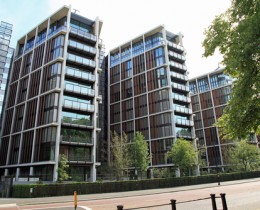 because of high unemployment and no particular housing shortage, then, even if borrowing costs are low, property prices may be stagnant or even declining – Cumbria is currently an example of this.
because of high unemployment and no particular housing shortage, then, even if borrowing costs are low, property prices may be stagnant or even declining – Cumbria is currently an example of this.
Positive Change: For property investors, the key is to see the positive changes before they happen and try and predict if these changes will continue or not. The fact that London has a high house price to earnings ratio does not mean prices will decline or level off. It’s just one criteria of many that affect the market. If for any reason people thought the economy in London would start to decline or go stagnant – a negative change – then prices could well decline sharply. But most people think the economy will continue to grow quite strongly and hence there is an anticipation of higher property prices that then feeds into the market and housing price movements.
Inward Investment: Just taking this criteria alone and focussing analysis on it - in the last few years there have been several waves of inward investment that have helped boost London property prices:
· Eurozone turmoil: This started in Greece, spread to Spain, Italy, Ireland,  Portugal and is now hitting peripheral areas like Turkey and Bosnia.
Portugal and is now hitting peripheral areas like Turkey and Bosnia.
· Taxes: Higher taxes in France helped create a flood of French investors escaping punitive fiscal policies.
· Arab Spring and Fall-out: A flood of investors came from Egypt, Libya, Tunisia, Syria and Yemen as autocratic regimes collapsed and new governments took over – leading to wealthy elites shifting investments into London property as a low tax safe haven.
· Global Unrest and Rioting: a further flood of investors is now occurring because of unrest in place like the Ukraine, Brazil, Argentina and now Bosnia – wealthy private individuals are concerned about retaining their wealth and often shift cash-liquidity into property in London.
· China: As the Chinese economy has boomed for 13 years – many canny Chinese see big risks in the Chinese economy looking forward and have chosen to invest in London as a hed ge in case of a Chinese economic collapse
ge in case of a Chinese economic collapse
· Japan: Some Japanese have chosen London after the Japanese central bank decided to print high quantities of currency, devaluing the Yen and boosting Japanese inflation – they think London property will retain its value.
Examples in UK: These are just a few examples of aspects that have boosted inward investment into property in the UK – most notably London – as it is seen as a global mega-city that provides a fairly high degree of legal, fiscal and political security – particularly with the Tories in power. For the next 12 months, this looks set to continue as more rioting and unrest sweeps through the world and the Tories remain in power. But just as these factors have remained positive in the last three years, they could equally turn negative quite rapidly if Labour win an outright majority in May 2015 and these super rich people decide that London is no longer a safe haven because of the threat of tax increases for the wealth and on property. An example of this type of affect is the decline in Paris property investment and prices after the socialists got into power a few years ago – foreign investment in France is now only 33% of what it was before the socialists got into power – a collapse. Much of this investment has moved to London.
Housing shortage (Supply-Demand): Much is written about this subject. However, it’s just one criteria. One can get falling house prices even when there is a shortage of supply – as happened in 20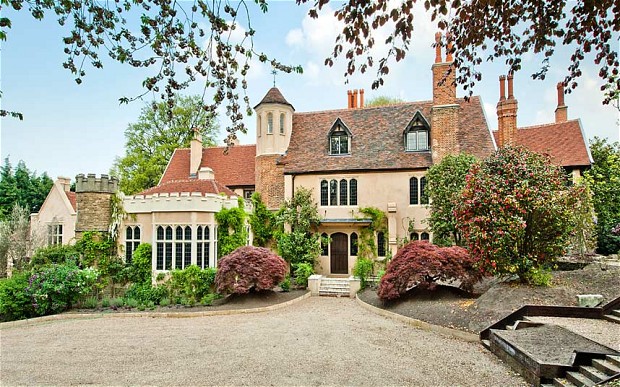 08-2010. If funding is not available for people to borrow to buy property – then prices will decline sharply as building grinds to a halt. The building of new homes will tend to start a few years after property prices start rising – they normally trail because builders like to be sure that prices are rising robustly before starting building, because risks are so huge – e.g. planning costs-delays, land costs, labour costs, building risk, sales risk, financing risk. It needs to be compelling before builders start to construct. In London, construction has risen sharply in the last few years – but almost all properties are high-end apartments – in the £500,000-£2,000,000 range – that are unaffordable for the average person. They cater more for the wealthy overseas investors – the same people we discussed above from the Eurozone crisis, Arab Spring and global unrest. The reason is simple – if a developer has a patch of land – they will try and build as many expensive flats in that area of land as possible. They cannot make money out of selling £150,000 flats or building social housing in London. This type and level of building will put price pressure on the upper end of the market, but the middle and lower end – from £120,000 to £500,000 will not be affected – these prices will move upwards and play catch-up to the upper end of the market in central London as expensive apartments start to flood into the market.
08-2010. If funding is not available for people to borrow to buy property – then prices will decline sharply as building grinds to a halt. The building of new homes will tend to start a few years after property prices start rising – they normally trail because builders like to be sure that prices are rising robustly before starting building, because risks are so huge – e.g. planning costs-delays, land costs, labour costs, building risk, sales risk, financing risk. It needs to be compelling before builders start to construct. In London, construction has risen sharply in the last few years – but almost all properties are high-end apartments – in the £500,000-£2,000,000 range – that are unaffordable for the average person. They cater more for the wealthy overseas investors – the same people we discussed above from the Eurozone crisis, Arab Spring and global unrest. The reason is simple – if a developer has a patch of land – they will try and build as many expensive flats in that area of land as possible. They cannot make money out of selling £150,000 flats or building social housing in London. This type and level of building will put price pressure on the upper end of the market, but the middle and lower end – from £120,000 to £500,000 will not be affected – these prices will move upwards and play catch-up to the upper end of the market in central London as expensive apartments start to flood into the market.
Examples: If you go to Cumbria, there might still be a housin g shortage – but it will be almost opaque. There will be homeless people, unemployed and people sleeping on the couch of friends and family, and rents might be going up if people cannot afford to buy or are unemployed - but this would not translate into property prices rising. They might still be declining. If the economy started to expand and unemployment dropped sharply, then property prices could rise sharply and rapidly in a form of adjustment. If public sector spending increased, this would also boost such rural areas, but with the adjustment from public to private sector employment continuing apace, rural areas like Cumbria will see continued high unemployment and depressed property prices in the average area.
g shortage – but it will be almost opaque. There will be homeless people, unemployed and people sleeping on the couch of friends and family, and rents might be going up if people cannot afford to buy or are unemployed - but this would not translate into property prices rising. They might still be declining. If the economy started to expand and unemployment dropped sharply, then property prices could rise sharply and rapidly in a form of adjustment. If public sector spending increased, this would also boost such rural areas, but with the adjustment from public to private sector employment continuing apace, rural areas like Cumbria will see continued high unemployment and depressed property prices in the average area.
5 Years of Pent Up Demand: One factor that people don’t seem to mention is that there was a five year period between 2008 and 2013 when hardly anyone was either buying or selling property. The young people – professionals – quite rightly chose to stay on the side-lines and rent because they thought the property market would decline or stay in the doldrums for many years. Because of this, rents rose sharply – just like they did after the last house price crash in 1990. But when you get 4-5 years worth of people all deciding that property prices are starting to move upwards, its human nature, they all start to jump in at the same time. It’s the typical herd instinct – or may be its rational. Because these younger people see property prices rising and think if they don’t jump in and grab a property now, it might be too late in f uture years. A mild sort of panic can set in – when their friends and peers all start buying and they think they may be left behind. They are encouraged if they have wealthy parents by hand-outs – because their parents don’t want to see them left behind either. This is true of the whole of the UK – but particularly in the so called “middle classes” or “professional classes”. If we take our example in London, with last year seeing property prices rise 10%, wealthy parents will be egging on their kids to buy property regardless of their nationality or background. But you can equally imagine in Cumbria, parents that saw their property prices drop sharply after 2008 and no particularly local momentum at this time discouraging their kids from buying property in Cumbria. One of the key points to this is market momentum – of positive change – driving buyer’s human behaviours and emotions.
uture years. A mild sort of panic can set in – when their friends and peers all start buying and they think they may be left behind. They are encouraged if they have wealthy parents by hand-outs – because their parents don’t want to see them left behind either. This is true of the whole of the UK – but particularly in the so called “middle classes” or “professional classes”. If we take our example in London, with last year seeing property prices rise 10%, wealthy parents will be egging on their kids to buy property regardless of their nationality or background. But you can equally imagine in Cumbria, parents that saw their property prices drop sharply after 2008 and no particularly local momentum at this time discouraging their kids from buying property in Cumbria. One of the key points to this is market momentum – of positive change – driving buyer’s human behaviours and emotions.
Young Professional: You will often see interesting analysis of a particular area during a period of property price rises that describe how an area is becoming popular with “young professi onals”. This might be code for “wealthy young people” or “middle class people” or “young well to do families”– it does not really matter. What is means is – if an area has wealthy people moving in and poorer people moving out – prices will rise. If a poorer area is close to a rich area with high paid jobs – the poorer people will often sell up and move out to buy a bigger property further away from the area – way from the high paid jobs area. A good example of this type of area at the moment in Hackney and Shoreditch – two areas that are being so called “gentrified”. High paid city workers, Tech City workers and professionals are moving in rapidly and less well paid people that see their property values skyrocket are selling up and moving further away from central London – some of these people moving out might have cash in hand or clear their debts – others might try and retire on the proceeds.
onals”. This might be code for “wealthy young people” or “middle class people” or “young well to do families”– it does not really matter. What is means is – if an area has wealthy people moving in and poorer people moving out – prices will rise. If a poorer area is close to a rich area with high paid jobs – the poorer people will often sell up and move out to buy a bigger property further away from the area – way from the high paid jobs area. A good example of this type of area at the moment in Hackney and Shoreditch – two areas that are being so called “gentrified”. High paid city workers, Tech City workers and professionals are moving in rapidly and less well paid people that see their property values skyrocket are selling up and moving further away from central London – some of these people moving out might have cash in hand or clear their debts – others might try and retire on the proceeds.
“Gentrification”: For property investors, if you can spot such an area early – before a wave of so-called “professionals” move in – or as they describe them in the 1980s “yuppies” or the “wide boys” or “Gordon Gekkos with brick phones” – then you can make a substantial capita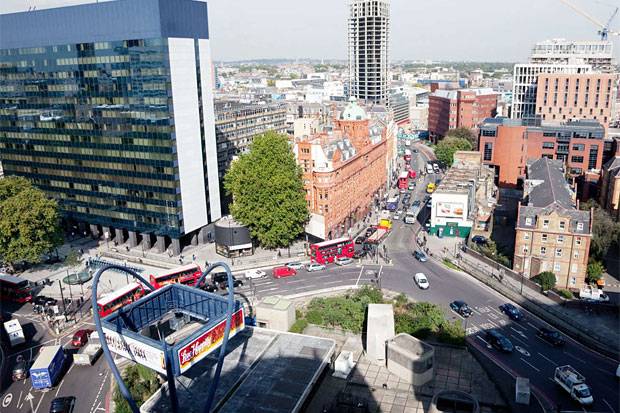 l gain rapidly. Places like Dalston, Hackney, Shoreditch, Stratford, Bow, Nine Elms, Maryland, Forest Gate, Acton, Ealing, Camberwell, New Cross, Kennington and Elephant & Castle all score quite high on the “gentrification index”. As professionals from all around the global move in and the ripple effect of house prices rises fans out from places like Mayfair, Chelsea, Kensington, Fulham and the City and Central London - property prices rise if the economy continues to perform well. But instead of people aged about 24 buying such properties like they did in 1985, this time, since most young people have sat on the side-lines renting for 5 years – these young people might be 30-35 years old and have the support of their aging babyboomer parents. You might wonder how a 30 year old earning £80,000 a year in London can afford a £600,000 2 bed flat in Hackney – and the answer will lie with their wealthy parents and/or the government providing the deposit.
l gain rapidly. Places like Dalston, Hackney, Shoreditch, Stratford, Bow, Nine Elms, Maryland, Forest Gate, Acton, Ealing, Camberwell, New Cross, Kennington and Elephant & Castle all score quite high on the “gentrification index”. As professionals from all around the global move in and the ripple effect of house prices rises fans out from places like Mayfair, Chelsea, Kensington, Fulham and the City and Central London - property prices rise if the economy continues to perform well. But instead of people aged about 24 buying such properties like they did in 1985, this time, since most young people have sat on the side-lines renting for 5 years – these young people might be 30-35 years old and have the support of their aging babyboomer parents. You might wonder how a 30 year old earning £80,000 a year in London can afford a £600,000 2 bed flat in Hackney – and the answer will lie with their wealthy parents and/or the government providing the deposit.
Bubble or Not: One topic people love to talk about is whether or not the property market is a “bubble”. This word conjures up the frightening probability that the bubble will eventually pop – deflate – e.g. there will be a crash. This emotion will draw people towards reading such an article. It’s really difficult either detect or confirm whether something is a “bubble” or not. If price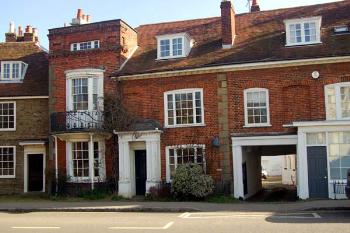 s rise far beyond a certain price to earnings ratio – like in London at 7.4 : 1 (compared to 4 : 1 for the rest of the UK) it does not necessarily mean there is a bubble. One reason lies in the fact that huge swaths of global investors pile into London property and this distorts the market. If earnings in London are growing rapidly whilst they are declining in Cumbria for instance, then one can envisage the ratio rising further in London and declining in Cumbria. We can probably say that property prices in London don’t look cheap – they are largely unaffordable for the lower 35% of the earners in London. But this does not mean they will crash – and indeed, they could rise sharply higher despite this. Normally a bubble develops when a mass of people pile into a market during a short period of time and drive things up as a sort of panic sets in. The amount of London property transactions is still well below levels found in 2007 – and whilst prices showed robust growth in 2013 at about 10%, it does not show the normal characteristics of a bubble just yet.
s rise far beyond a certain price to earnings ratio – like in London at 7.4 : 1 (compared to 4 : 1 for the rest of the UK) it does not necessarily mean there is a bubble. One reason lies in the fact that huge swaths of global investors pile into London property and this distorts the market. If earnings in London are growing rapidly whilst they are declining in Cumbria for instance, then one can envisage the ratio rising further in London and declining in Cumbria. We can probably say that property prices in London don’t look cheap – they are largely unaffordable for the lower 35% of the earners in London. But this does not mean they will crash – and indeed, they could rise sharply higher despite this. Normally a bubble develops when a mass of people pile into a market during a short period of time and drive things up as a sort of panic sets in. The amount of London property transactions is still well below levels found in 2007 – and whilst prices showed robust growth in 2013 at about 10%, it does not show the normal characteristics of a bubble just yet.
Currency Printing: However, what there has over the last 5 years been a bubble in the amount of currency printed by central banks – something we have described in detail over the last 3 years – particularly in the US Dollar and Pound Sterling. Much of this currency (note we don’t call it money – it’s just digital paper currency – real money is “gold”) was printed out of thin air and was exported all around the world. This created bubbles in stock markets and property in far off places like China, Brazil and India. It will certainly have found a home also in London. This is the so called “bond market bubble” or the “debt bubble”. The UK also contributed to this with its printing of Sterling. China joined in. About a year ago Japan joined in. They all thought they could print their economies out of trouble – to create the illusion of real growth by creating some inflation. What they are trying to achieve is what Mark Carney – the Chair of the Bank of England - calls “escape velocity” – a phrase Captain Kirk from Star Trek would have been proud of. But this is a very dangerous game. It has unintended consequences.
last 3 years – particularly in the US Dollar and Pound Sterling. Much of this currency (note we don’t call it money – it’s just digital paper currency – real money is “gold”) was printed out of thin air and was exported all around the world. This created bubbles in stock markets and property in far off places like China, Brazil and India. It will certainly have found a home also in London. This is the so called “bond market bubble” or the “debt bubble”. The UK also contributed to this with its printing of Sterling. China joined in. About a year ago Japan joined in. They all thought they could print their economies out of trouble – to create the illusion of real growth by creating some inflation. What they are trying to achieve is what Mark Carney – the Chair of the Bank of England - calls “escape velocity” – a phrase Captain Kirk from Star Trek would have been proud of. But this is a very dangerous game. It has unintended consequences.
Unintended Consequences: Firstly – as prices rise – caused by this currency printing – the poor find it difficult to make ends meet. They then start to become desperate as food and fuel prices rise. They then start to riot and/or create political unrest. As the more fragile economies firstly get a boost from all this cheap currency and lending, like Greece, Turkey and Egypt did in the period 2000-2008, then a further  boost in dollars during QE1, QE2, QE3 and QE infinity in the last 5 years – when currency finally starts to dry up – as it has started to as of Nov 2013, these economies will start to get desperate and more riots and disorder will increasingly break out around the world. The USA seems to be happy that their economy is finally starting to move forwards positively – but as they try and start to tighten the screw on their ultra-loose monetary policy, all around the world we will see the consequences. Then it comes full circle because as some of these developing economies start to collapse, the people who have this cheap money from the debt bubble will then shift it rapidly out and into London property. They will also see very inflation as their national currency starts to collapse – then want to shift their wealth out of paper and into a tangible asset – namely property – in a stronger currency - namely UK Sterling. So they will again want to buy London assets – property. What we are saying is that 5 years of dollar printing and inflation all round the world will lead some countries into hyperinflation as their currencies collapse – and the richest people with most liquid and mobile wealth will shift and park their money in London property – to protect their wealth from the ravages of inflation at home. As London has become a global city for investment – open for business as Boris Johnson says – the top 1% wealthy people that own 50% of the world’s wealth will increasingly pile into London property as a safe haven against global currency collapse. The global wealth seems to be built on the shaky foundation of this cheap printed currency and the richest 1% have access to most of this printed currency that they can then shift rapidly into a real asset like property in the event of a crisis. This has been quietly happening for the last few years – and will continue as long as the Tories stay in power – or whoever is in power does not drive these foreign investors away with higher taxes or punitive property policies.
boost in dollars during QE1, QE2, QE3 and QE infinity in the last 5 years – when currency finally starts to dry up – as it has started to as of Nov 2013, these economies will start to get desperate and more riots and disorder will increasingly break out around the world. The USA seems to be happy that their economy is finally starting to move forwards positively – but as they try and start to tighten the screw on their ultra-loose monetary policy, all around the world we will see the consequences. Then it comes full circle because as some of these developing economies start to collapse, the people who have this cheap money from the debt bubble will then shift it rapidly out and into London property. They will also see very inflation as their national currency starts to collapse – then want to shift their wealth out of paper and into a tangible asset – namely property – in a stronger currency - namely UK Sterling. So they will again want to buy London assets – property. What we are saying is that 5 years of dollar printing and inflation all round the world will lead some countries into hyperinflation as their currencies collapse – and the richest people with most liquid and mobile wealth will shift and park their money in London property – to protect their wealth from the ravages of inflation at home. As London has become a global city for investment – open for business as Boris Johnson says – the top 1% wealthy people that own 50% of the world’s wealth will increasingly pile into London property as a safe haven against global currency collapse. The global wealth seems to be built on the shaky foundation of this cheap printed currency and the richest 1% have access to most of this printed currency that they can then shift rapidly into a real asset like property in the event of a crisis. This has been quietly happening for the last few years – and will continue as long as the Tories stay in power – or whoever is in power does not drive these foreign investors away with higher taxes or punitive property policies.
End Game: The end game for Central Banks when this charade of currency printing 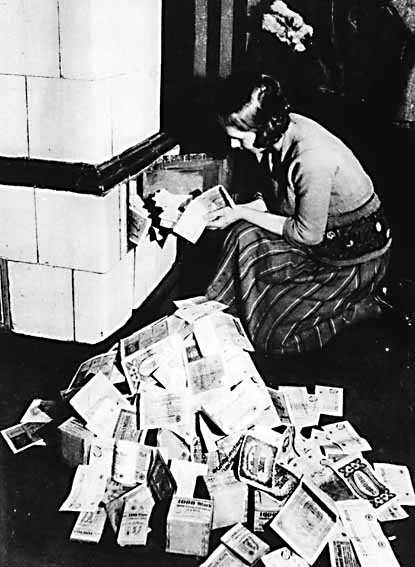 back-fires and a collapse starts – is to simply print even more currency at an accelerating pace - then hyperinflation will break out as currencies collapse around the world. There would then need to be a “re-set” – or as some describe it a “re-boot”. A new currency would be created. Just to remind everyone that no currency has every lasted more than a few hundred years before collapsing. Almost all currencies today are fiat – they rely on ever increasing debt and quantity to survive. Eventually when it becomes clear that debts cannot be paid off, the currency is then printed into oblivion or the value of a currency collapses or both. The trick is to try and pick the currency winner. The only solid currencies are those with no currency printing that are backed by gold, oil or metals – so Norway score highest, with Canada and Australia probably close behind. The USA and UK are both heavily exposed with high deficit spending. The UK is in a pretty bad way, but helped by strong inflows of investment in London – as long as it can maintain it’s so called “safe haven status” it can survive – but this could easily disappear if Labour won a majority in the next election May 2015 as rich global investor shift away from the UK.
back-fires and a collapse starts – is to simply print even more currency at an accelerating pace - then hyperinflation will break out as currencies collapse around the world. There would then need to be a “re-set” – or as some describe it a “re-boot”. A new currency would be created. Just to remind everyone that no currency has every lasted more than a few hundred years before collapsing. Almost all currencies today are fiat – they rely on ever increasing debt and quantity to survive. Eventually when it becomes clear that debts cannot be paid off, the currency is then printed into oblivion or the value of a currency collapses or both. The trick is to try and pick the currency winner. The only solid currencies are those with no currency printing that are backed by gold, oil or metals – so Norway score highest, with Canada and Australia probably close behind. The USA and UK are both heavily exposed with high deficit spending. The UK is in a pretty bad way, but helped by strong inflows of investment in London – as long as it can maintain it’s so called “safe haven status” it can survive – but this could easily disappear if Labour won a majority in the next election May 2015 as rich global investor shift away from the UK.
We hope this Special Report has given you some interesting insights into property investment – and some helpful criteria to consider before you investor your hard earned cash. If you have any comments or queries, please contact us on enquiries@propertyinvesting.net

